As avid history buffs and antique aficionados, we recently had the chance to visit a unique museum dedicated to preserving the rich history of construction equipment. Nestled in a quiet corner of the city, this museum offers a fascinating glimpse into the evolution of machinery that built our modern world. From massive steam shovels to intricately designed cranes, the collection spans over a century of engineering marvels. In this post, we’ll take you through my visit, sharing insights and images that highlight the incredible journey of construction technology.
First, how to get there. The Simcoe County Museum is situated just north of Barrie, Ontario, and is only an hour’s drive from Toronto, making it perfect for a day trip. Let’s begin our tour with:
SAWYER MASSEY, 1906 15HP STEAM TRACTION ENGINE
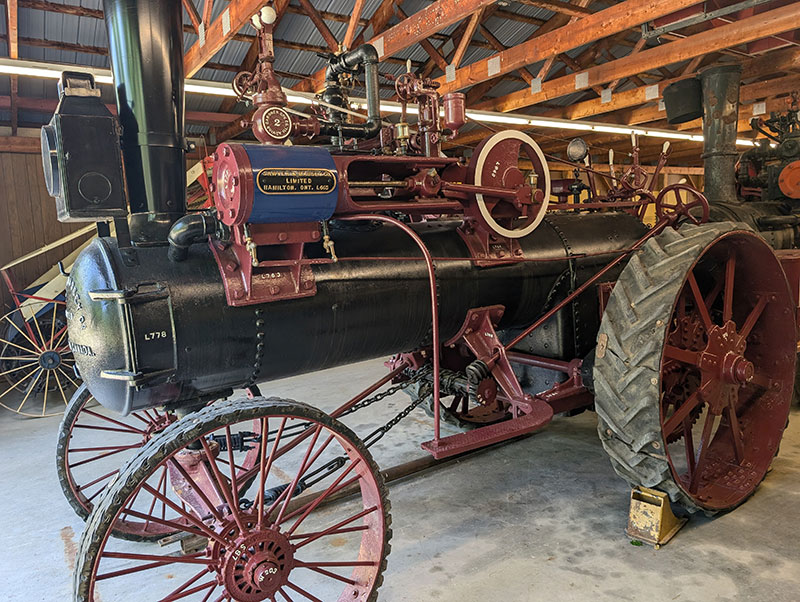
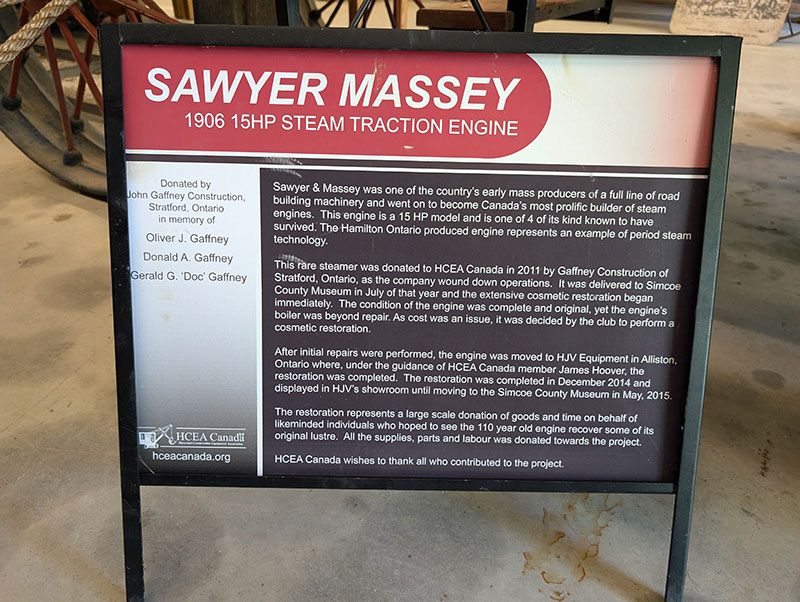
From the museum description: Sawyer & Massey was one of the country’s early mass producers of a full line of road building machinery and went on to become Canada’s most prolific builder of steam engines. This engine is a 15 HP model and is one of 4 of its kind known to have survived. The Hamilton Ontario produced engine represents an example of period steam This rare steamer was donated to HCEA Canada in 2011 by Gaffney Construction of County Museum in July of that year and the extensive cosmetic restoration began immediately. The condition of the engine was complete and original, yet the engine’s boiler was beyond repair. As cost was an issue, it was decided by the club to perform a cosmetic restoration.
After initial repairs were performed, the engine was moved to HJV Equipment in Alliston Ontario where, under the guidance of HCEA Canada member James Hoover, the restoration was completed. The restoration was completed in December 2014 and displayed in HJV’s showroom until moving to the Simcoe County Museum in May, 2015. The restoration represents a large scale donation of goods and time on behalf of likeminded individuals who hoped to see the 110 year old engine recover some of its original lustre. All the supplies, parts and labour was donated towards the project. HCEA Canada wishes to thank all who contributed to the project.
Beyond the heritage construction equipment, the museum also boasts an impressive collection of antique and vintage farm machinery. As we wandered through the exhibits, we were transported to the days when these robust machines were the backbone of agricultural life. From early plows and threshers to classic tractors and harvesters, the variety of farm equipment on display highlights the ingenuity and hard work that defined rural communities.
1875 THRESHER
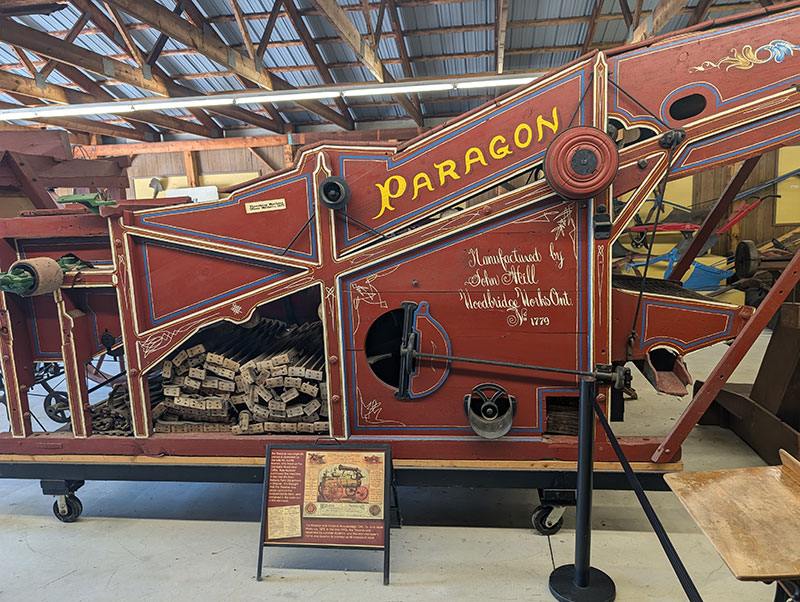
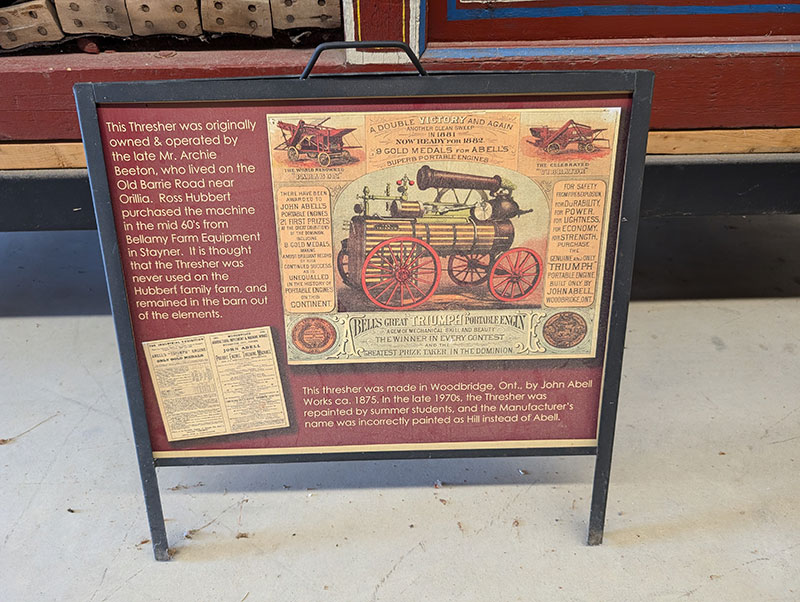
This Thresher was originally owned & operated by the late Mr. Archie Beeton, who lived on the Old Barrie Road near Orillia. Ross Hubbert purchased the machine in the mid 60s from Bellamy Farm Equipment in Stayner. It is thought that the Thresher was never used on the Hubbert family farm, and remained in the barn out of the elements.
This thresher was made in Woodbridge, Ont., by john Abell Works ca. 1875. In the late 1970s, the Thresher was repainted by summer students, and the Manufacturer’s name was incorrectly painted as Hill instead of Abell.
JOHN DEERE SHAKER POTATO DIGGER
It Pays Do a Clean Job of Potato Harvesting. Does not cut potatoes. Handles easily.
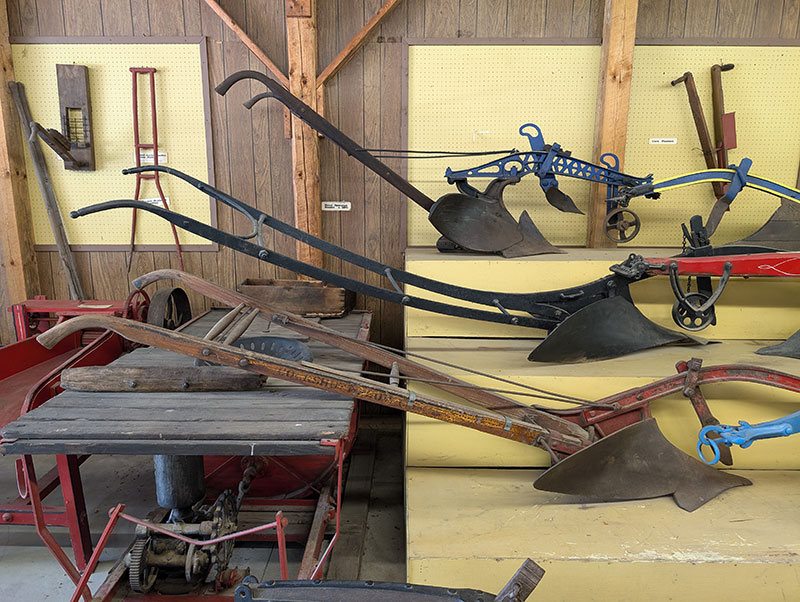
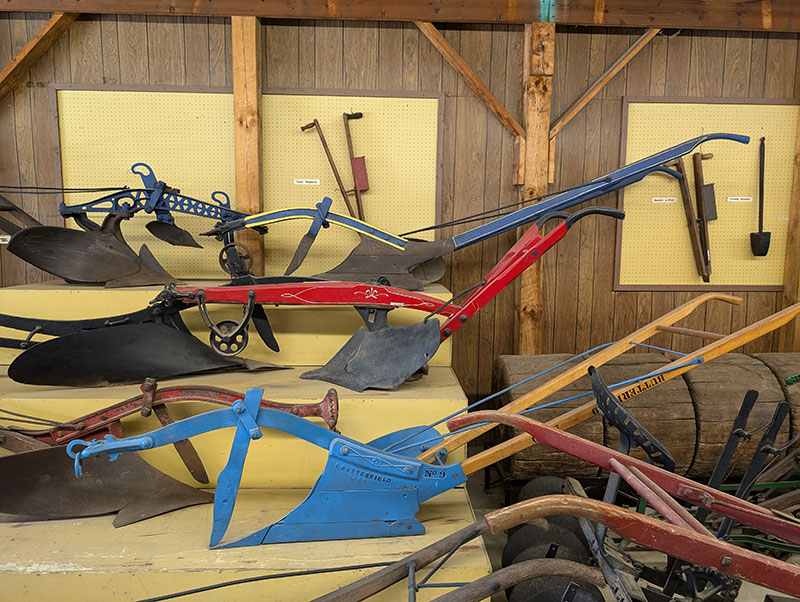
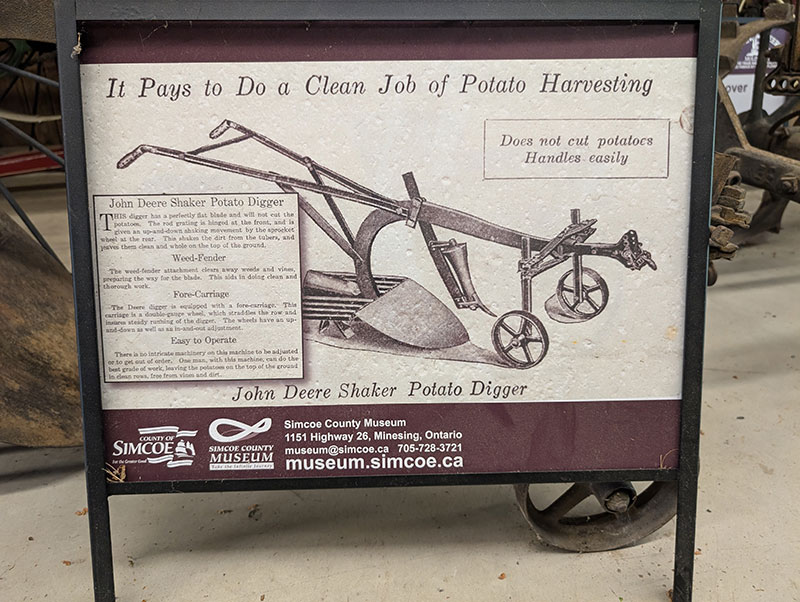
This digger has a perfectly flat blade and will not cut the potatoes. The rod grating is hinged at the front, and is given an up-and-down shaking movement by the sprocket wheel at the rear. This shakes the dirt from the tubers, and leaves them clean and whole on the top of the ground.
Weed-Fender: The weed-fender attachment clears away weeds and vines, preparing the way for the blade. This aids in doing clean and thorough work.
Fore-Carriage: The Deere digger is equipped with a fore-carriage. This carriage is a double-gauge wheel, which straddles the row and insures steady running of the digger. The wheels have an up- and-down as well as an in-and-out adjustment.
Easy to Operate: There is no intricate machinery on this machine to be adjusted or-to get out of order. One man, with this machine, can do the best grade of work, leaving the potatoes on the top of the ground in clean rows, free from vines and dirt.
PIONEER STUMP PULLER
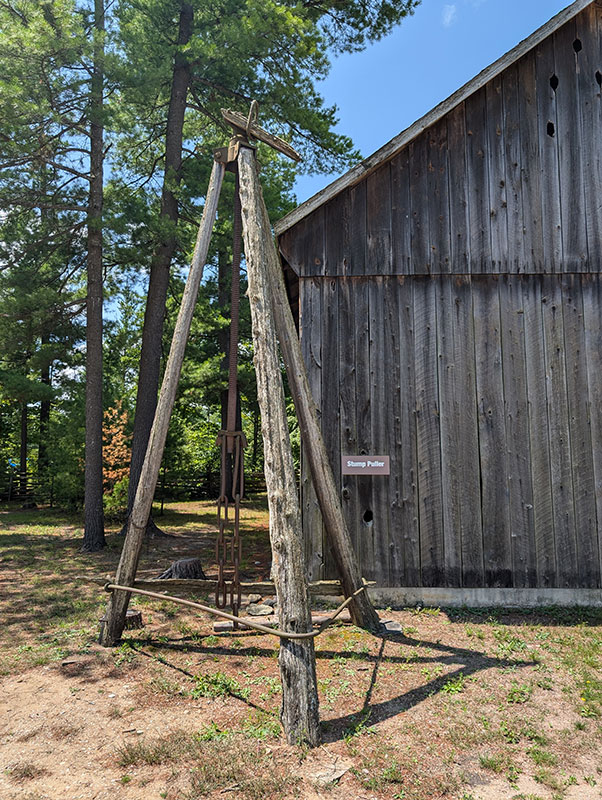
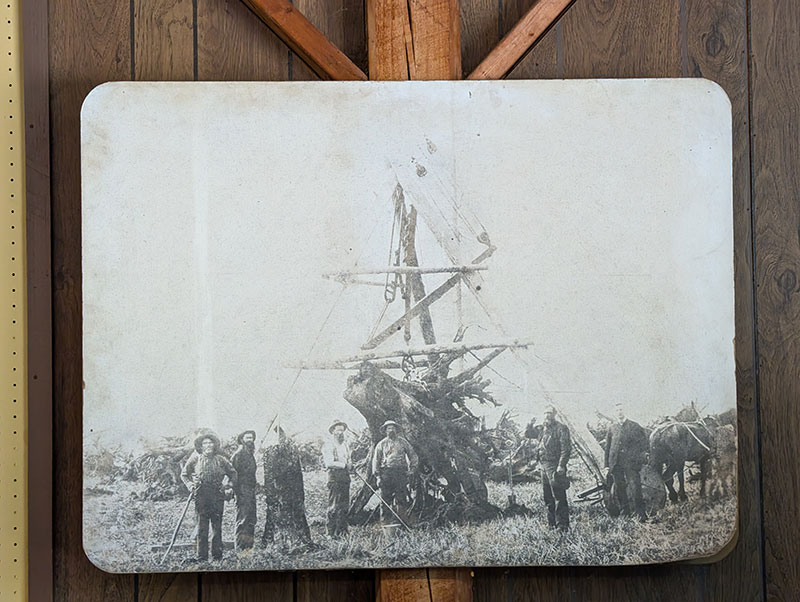
The stump puller was a significant tool used during the early days of land clearing, particularly in North America during the 19th and early 20th centuries. During the westward expansion in the United States and the settlement of new territories in Canada, clearing land for farming was a significant challenge faced by pioneers. The dense forests and deeply rooted trees required an effective solution for land clearing, and the stump puller emerged as an essential tool in this process. Its use allowed settlers to more quickly establish homesteads and communities in previously untamed areas.Here are some key points about this fascinating piece of equipment:
The stump puller was a large, robust device designed to remove tree stumps and roots from the ground, a crucial step in preparing land for agriculture and construction. These machines were often manually operated and relied on mechanical leverage to uproot stumps that were otherwise very difficult to remove by hand.
Types and Mechanisms
- Lever-based Stump Pullers: These used long levers and a fulcrum to multiply the force exerted by the operator, allowing even deeply rooted stumps to be lifted out of the ground.
- Screw-based Stump Pullers: These devices featured a large screw mechanism that, when turned, would gradually lift the stump from the ground.
- Winch and Cable Stump Pullers: These employed a winch and a series of cables wrapped around the stump. The winch would be cranked, pulling the stump out of the ground through the tension in the cables.
While modern machinery has replaced the pioneer stump puller, its legacy lives on in the history of agricultural and land-clearing equipment. Museums and historical societies often showcase these devices to illustrate the ingenuity and determination of early settlers in overcoming the challenges of their environment.
EAGLE 22-45 1930, MODEL: H
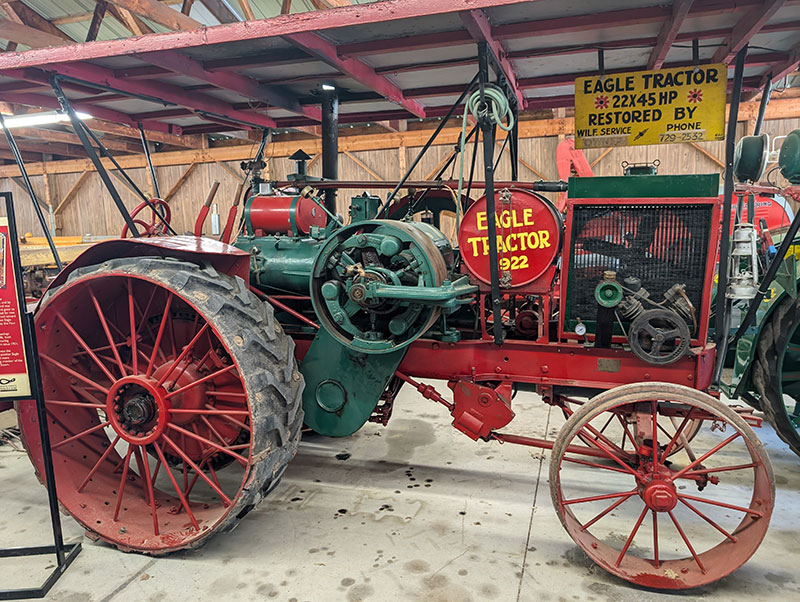
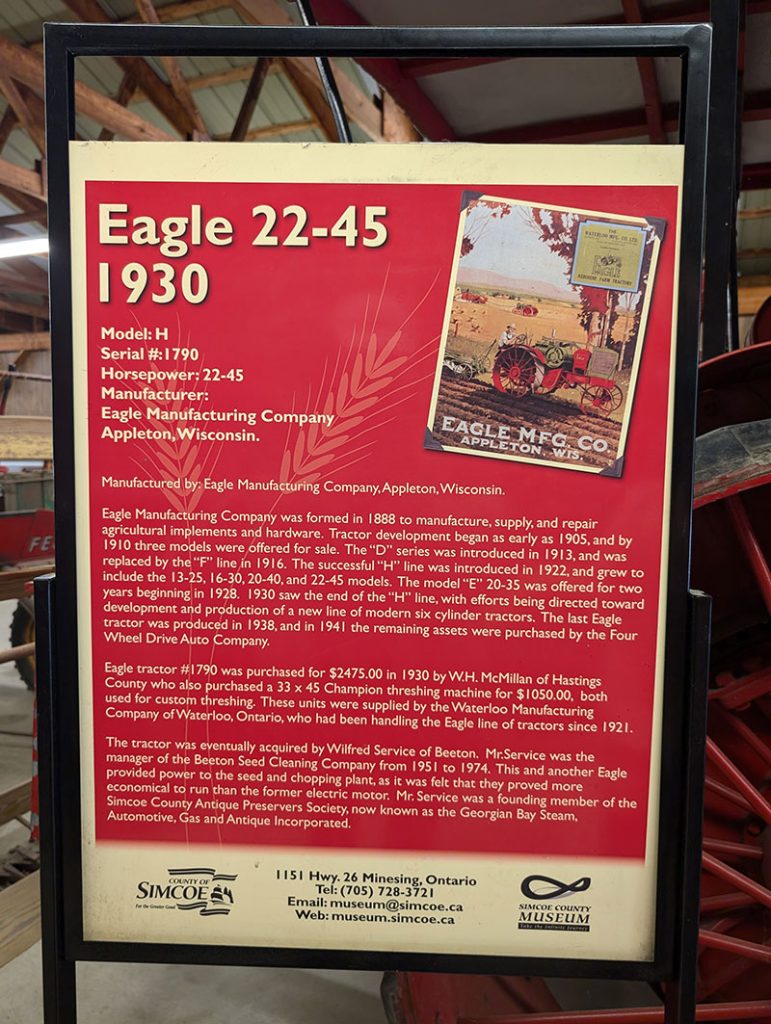
Serial 1790
Horsepower: 22-45
Manufacturer: Eagle Manufacturing Company Appleton, Wisconsin.
Eagle Manufacturing Company was formed in 1888 to manufacture, supply, and repair agricultural implements and hardware. Tractor development began as early as 1905, and by 1910 three models were offered for sale. The “D” series was introduced in 191 3, and was replaced by the “F” line in 1916. The successful “H” line was introduced in 1922, and grew to include the 13-25, 16-30, 20-40, and 22-45 models. The model “E” 20-35 was offered for two years beginning in 1928. 1930 saw the end of the “H” line, with efforts being directed toward development and production of a new line of modern six cylinder tractors. The last Eagle tractor was produced in 1938, and in 1941 the remaining assets were purchased by the Four Wheel Drive Auto company.
Eagle tractor #1790 was purchased for $2475.00 in 1930 by W.H. McMillan of Hastings County who also purchased a 33 x 45 Champion threshing machine for $1050.00, both used for custom threshing. These units were supplied by the Waterloo Manufacturing Company of Waterloo, Ontario, who had been handling the Eagle line of tractors since 1921.
The tractor was eventually acquired by Wilfred Service of Beeton. Mr. Service was the manager of the Beeton Seed Cleaning Company from 1951 to 1974. This and another Eagle provided power to the seed and chopping plant, as it was felt that they proved more economical to run than the former electric motor, Mr. Service was a founding member of the Simcoe County Antique Preservers Society, now known as the Georgian Bay Steam, Automotive, Gas and Antique Incorporated.
While the heritage construction equipment is undoubtedly a highlight, the museum’s collection of antique and vintage farm equipment is equally fascinating. We were drawn to the displays of early farming tools and machinery, from simple hand-operated implements to complex steam-powered threshers and classic tractors. These artifacts paint a vivid picture of agricultural life in the past, showcasing the evolution of farming practices and the relentless pursuit of efficiency and productivity. The farm equipment exhibits provide an enriching complement to the construction machinery, offering insights into another crucial aspect of our industrial heritage.
There are countless other treasures housed within this remarkable museum, each telling its own unique story of innovation and hard work. However, we don’t want to spoil all the surprises. We invite you to visit the Simcoe County Museum (1151 ON-26, Minesing, ON L9X 0Z7) and experience these historical marvels firsthand. Happy discovery!



